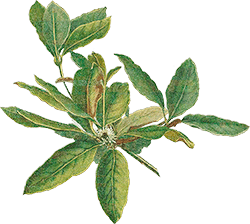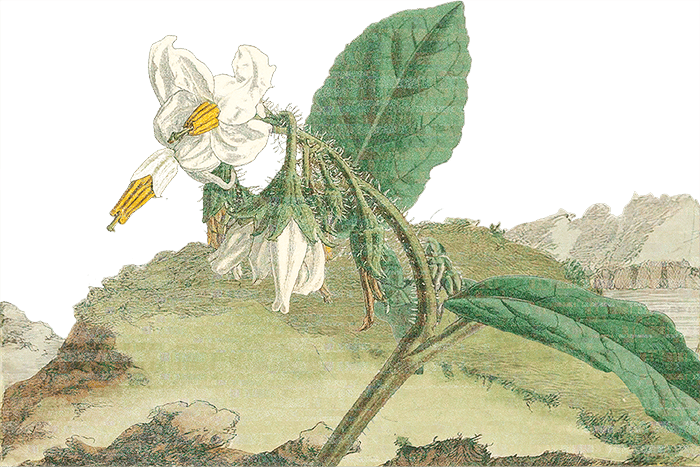On today’s show we learn about the Kapitia Skink, a critically endangered reptile native to the west coast of the South Island of Aotearoa New Zealand, roughly 100 miles west of the city of Christchurch.
Rough Transcript
Intro 00:05
Welcome to Bad at Goodbyes.
On today’s show we consider the Kapitia Skink
Species Information 02:05
The Kapitia Skink is a critically endangered reptile native to the west coast of the South Island of Aotearoa New Zealand, roughly 100 miles west of the city of Christchurch.
Description
Kapitia Skink are quite small, measuring roughly 2-4 inches in length. They are lightweight, generally weighing less than half an ounce. Their bodies are long and slender. Roughly the size of an adult human pointer finger.
They have a slight rounded snout, with large, dark eyes set on each side of their flat, pyramid shaped head. Their torso is slender and cylindrical, with four limbs, each tipped with five clawed digits.
Their tail is often longer than their torso, it’s flexible, muscular and tapers to its tip. The tail plays a crucial role in balance, locomotion, and defense from predation.The Kapitia Skink’s tail is prehensile, meaning that it can curl around objects, gripping branches for example to aid in climbing. It can also shed its tail as a defense mechanism.
Here’s how this works: The skink’s tail has what are called fracture planes, areas of cellular weakness designed to break easily. If a predator grabs the skink’s tail, muscles contract around a fracture plane, causing the tail to detach, a bit like a plug from a socket. The detached tail will continue to writhe and wriggle, ideally temporarily distracting the predator, which allows the skink to escape. And then over time the skink will regrow a new tail, though some observations on skink in captivity suggest that the regenerated tail may not end up being as long and or as strong as the original.
Skink have scaled skin, that is smooth, patterned and a little reflective. Their dorsal scales, on their back are a rich red-brown, with lighter and darker flecks. Their sides are marked by light and dark brown and black lateral stripes. Their ventral scales, the underside, their belly are yellow, speckled with black flecks. The underside of their tail transitions from yellow to a blue-gray pocked with pinkish specks. Their specks and scale patterns are camouflage in their habitat and the patterning is unique to each skink, and has been used by researchers to identify distinct individuals.
Behavior
Skink are cold blooded. They rely on external factors to regulate their body temperature, specifically they’re heliothermic, meaning they rely on warmth from the sun. And as such they are diurnal meaning they are active during the day, in the sunlit hours seeking food, and basking in the sunshine to gather heat energy.
Kapitia Skink are like shy, a 2024 study observed that the skink spend roughly 90% of their time out-of-sight, hidden. Of that remaining 10%, generally between 10am and 4pm, they were observed in the open, spending roughly half that time basking in the sun and the other half active, climbing, walking, foraging for food.
Kapitia Skink are insectivorous, meaning they feed on a diet of insects. Flies, Moths, Beetles, Crickets and their larvae. Kapitia Skink are active predators, they actively seek prey. Likely relying on their eyesight (they are believed to have keen, color vision), and use of tongue flicking to detect chemical cues in the air. The Kapitia Skink have a vomeronasal system. We covered the vomeronasal system on a recent episode, so brief recap here, basically this is a secondary scent sense system located in the roof of the mouth, that can detect airborne pheromones and chemical cues. So the skink flicks its tongue, to pull air molecules into its mouth and to vomeronasal tubes, whose sense receptors help it locate prey.
Scientists believed that Kapitia Skinks may also have previously included fruit in their diet. Researchers at Auckland Zoo have observed a preference for berries among captive skink.
We have limited information about Kapitia Skink communication and social behavior. In part because they spend so much time hidden. They’ve been observed employing a wide variety of hiding places, called retreats, like high grasses, leaf litter, logs, and even human debris, like wooden planks, fenceposts and metal sheets to hide from predators and the elements.
They seem to be generally solitary, only coming together to mate. Males have demonstrated some territorial behavior, using visual displays, like head bobs and raised posture to communicate defense of their home range. Given their vomeronasal system, they likely also communicate using pheromonal signals. And because their scales are sensitive to touch, it is likely that tactile communication and physical contact play a role in mating behavior.
Reproduction
Skink do not form long-term pair bonds. After mating the male and female part. The pregnant female gestates for roughly 3-4 months with birthing generally occurring in Jan-Mar, late summer here in the southern hemisphere. Unlike most reptile, who lay eggs, Kapitia Skinks are viviparous, meaning they give birth to live young. The embryos develop inside the female, and she gives birth to roughly 2-5 offspring who are born well developed and fully independent, able to fend for themselves immediately.
Though born independent, Kapitia Skink are relatively slow-growing and juveniles are estimated to reach sexual maturity around 4 years of age. They live to roughly 10 years of age.
In The Dream
————
In the dream, the cold night is a threshold, more than just sleep, a stillness profound and encompassing and threatening, muscles loose and useless, thoughts muted, a slowed heart, the scent of menace on my tongue. Hidden. The moon takes its wander. And then, the dawn. Glorious. It too is a portal, from the first sliver of orangelight an awakening, a reanimating, a kind of resurrection. A tiny firework spins its sparkles on the sidewalk and then goes out. And then is lit again and then goes out and lit again; void and phoenix every solar cycle.
And to truly start each day anew, in the dream.
————
Habitat
The Kapitia Skink is native to a tiny habitat on the West Coast of the South Island of Aotearoa New Zealand. This is a thin strip of tall dense grasses, roughly half a mile long and 50 ft wide nestled between the coastal sand dune beach of the Tasman Sea to the west and private agricultural pasturelands to the east.
The landscape is generally flat, with occasional small hills, and scattered clumps of denser vegetation, driftwood, logs, and human debris.
The Aotearoa New Zealand coast has a temperate oceanic climate with high rainfall and moderate temperatures, with summer highs in the mid 70s°F and winter lows in the low 40s°F and abundant rainfall, typically exceeding 100 inches per year.
Threats and Conservation
Before human encroachment and agricultural development this region was once a coastal forest. Which is reflected in the Kapitia Skink’s anatomy. Its prehensile tail (not unlike a monkeys) is adapted for climbing, clinging and hanging from branches. But today no native vegetation remains in its habitat and recent research suggests no evidence of the skink climbing in the wild.
The population trends and conservation of the Kapitia Skink have taken a wildly winding path over the last 40 years.
Though we do no have population data from this time, in the late 1990s and early 2000s, a majority of their habitat was entirely lost to farm development. Then a 2009 field survey found no Kapitia Skink in the wild. A 2013 survey found two. Then a more extensive trapping and surveying effort across four studies in 2015 resulted in the capture and identification of roughly 40 skinks, and at that time scientists estimated the total population to be between 40-50 skinks.
Then in 2018, Cyclone Fehi struck the region, causing massive tidal surges that submerged the Kapitia Skink’s entire habitat over two tidal cycles. Lynn Adams, of the Aotearoa New Zealand Department of Conservation explains “There were these massive waves…The whole entire population was overwashed over a couple of tides…And I actually thought that we’d lost the whole species. So that was my worst day. There were a few tears. But it turned out that most of them … survived.”
And so immediately, this is like March 2018, the Department of Conservation initiated an emergency captive breeding program. They captured 50 Kapitia Skink and sent them to the Auckland Zoo.
The captive breeding program has been a huge success, nearly doubling the population.
In the meantime though, the remaining wild skink faced increasing threat from further habit encroachment by human development, and predation by non-native human introduced mammal species, like rats, feral cats, and particularly mice.
So, in 2020 the Department of Conservation purchased roughly 3 acres of skink habitat and established the Kapitia Scientific Reserve. In the last 4 years they have built a fence to keep out rodent predators; Jade Angel Christiansen’s 2023 study suggests the fence is working. From 2021 through 2023, the Department of Conservation has been releasing captive skink back into the wild; three successful releases have placed 96 Kapitia Skink back into their now protected habitat.
Nevertheless the Kapitia Skink has been considered critically endangered on the IUCN Red List since 2021 and their population is generally in decline.
Our most recent counts estimate there are less than 200 Kapitia Skink in the wild.
Citations 22:12
“Arboreal behaviour and habitat use in the Nationally Critical Kapitia Skink (Oligosoma salmo)”. Marcel Kerrigan, Sarah Brill, Marleen Baling. Perspectives in Biodiversity, Volume 2, pp 11–20. 2024 – https://doi.org/10.34074/pibdiv.002103
“Biomimetic fracture model of lizard tail autotomy” Navajit S Baban et al. Science Vol. 375, 770-774 (2022) – https://doi.org/10.1126/science.abh1614
IUCN – https://www.iucnredlist.org/species/156730274/156730436
“Habitat use and translocation techniques for the critically endangered Kapitia Skink, Oligosoma salmo” Jade Angel Christiansen. Master of Science Thesis, University of Otago 2023 – https://hdl.handle.net/10523/15198
New Zealand Threat Classification System 2021 Report – https://nztcs.org.nz/assessments/123980
“Origin, diversification, and systematics of the New Zealand skink fauna (Reptilia: Scincidae)” David G. Chapple, Peter A. Ritchie, Charles H. Daughert. Molecular Phylogenetics and Evolution, Volume 52, Issue 2, August 2009, Pages 470-487 – https://doi.org/10.1016/j.ympev.2009.03.021
“Rare skinks return to southern home” New Zealand Department of Conservation Media Release. April 2023 – https://www.doc.govt.nz/news/media-releases/2023-media-releases/rare-skinks-return-to-southern-home/
“Sounds of Science” Podcast, Episode 3 with Lynn Adams, May 2019, from the New Zealand Department of Conservation – https://www.doc.govt.nz/news/podcast/sounds-of-science-archive/
“Lost and Found: Taxonomic revision of the speckled skink (Oligosoma infrapunctatum; Reptilia; Scincidae) species complex from New Zealand reveals a potential cryptic extinction, resurrection of two species, and description of three new species.” Zootaxa. 4623. 441-484. 2019. http://doi.org/10.11646/zootaxa.4623.3.2
Wikipedia – https://en.wikipedia.org/wiki/Oligosoma_salmo
Music 23:55
Pledge 27:31
I honor the lifeforce of the Kapitia Skink. I will commit its name to my record. I am grateful to have shared time on our planet with this being. I lament the ways in which I and my species have harmed and diminished this species.
And so, in the name of the Kapitia Skink I pledge to reduce my consumption. And my carbon footprint. And curb my wastefulness. I pledge to acknowledge and attempt to address the costs of my actions and inactions. And I pledge to resist the harm of plant or animal kin or their habitat, by individuals, corporations, and governments.
I pledge my song to the witness and memory of all life, to a broad celebration of biodiversity, and to the total liberation of all beings.

